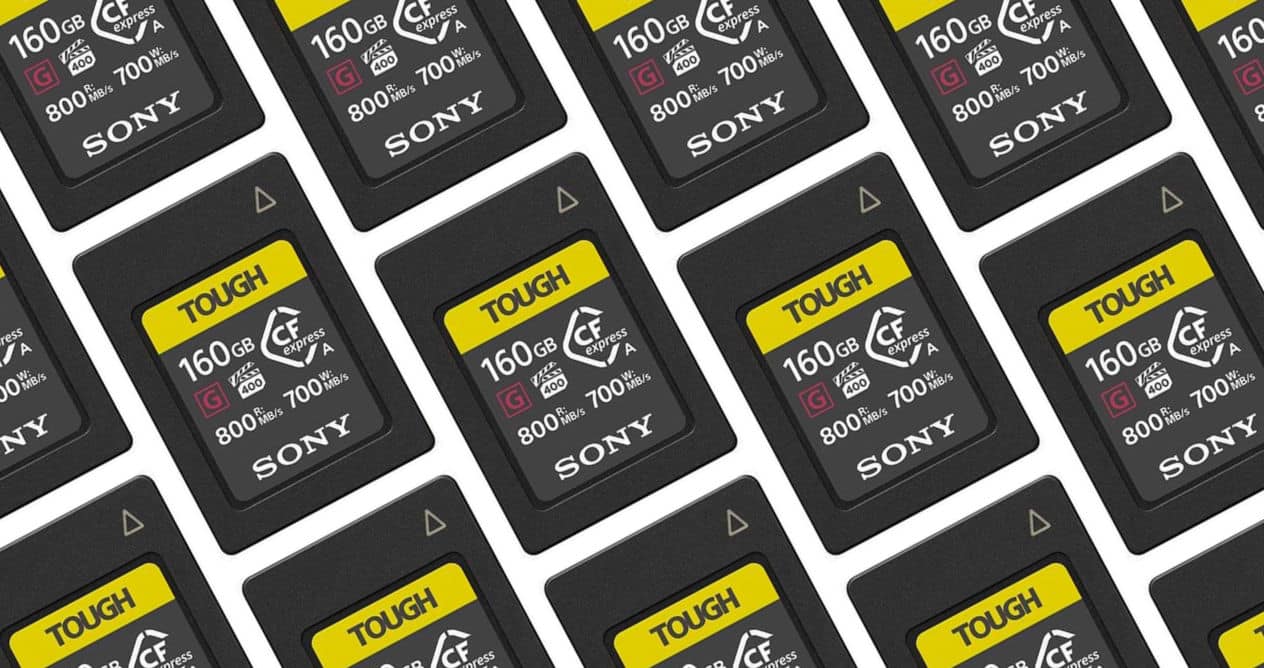
In 2016 CFexpress was announced, a new memory card format not to be confused with the old CF (Compact Flash). It is different and designed to offer greater performance as well as other advantages in highly demanding environments. Now there is more talk about him as a result of the latest releases from Canon and Sony. so this is everything you need to know about CFexpress, from its features to its current prices.
CFExpress, high performance storage

Although it may seem like another excuse for manufacturers to continue extracting money from users, launching a new memory card standard responds to a clear need to improve work capabilities in highly demanding environments.
This is something that is now seen more clearly, with the new proposals that brands like Canon or Sony have recently presented. Although the birth and use is something that we have been seeing as something real for some years now.
In 2016 the format was announced, although it was not until a year later that they began to hit the market along with cameras like the Canon EOS C500 Mark II, Nikon Z6 and Z7.
The main feature of these new memory cards is their high speed when making data transfers. Up to 4 GB/s can be achieved by one of these supports through the use of 4 lines that are connected using the PCI 3.0 interface. and there is three types of CFexpress cards: Type A, Type B and Type C. Each of these have a different size, so it is up to each manufacturer to choose one or the other based on their own criteria.
| CFexpress Type A | CFexpress Type B | CFexpress Type C | |
|---|---|---|---|
| Dimensions | 20 x 28 x 2,8 mm | 38,5 x 29,6 x 3,8 mm | 54 x 74 x 4,8 mm |
| connection interface | PCIe Gen3 (1 lane) | PCIe Gen3 (2 lane) | PCIe Gen3 (4 lane) |
| Protocol | NVMe 1.3 | NVMe 1.3 | NVMe 1.3 |
| theoretical speed | 1GB/s (8Gbps) | 2GB/s (16Gbps) | 4GB/s (32Gbps) |
However, the most important thing is that these cards should not be confused with CFast. These are cards also intended for high-performance uses and, for example, cameras like the Blackmagic Pocket Cinema Camera 4K or 6K.
Regarding speeds, these memory cards are designed to be used in demanding environments, both at the photo and video level. Thanks to its high read and write speeds, workflows are improved in every way.
At first you have the possibility of capturing images and videos with much more information thanks to such a high writing capacity. This is very important to work with RAW material. And it is that, for example, 1 minute of 8K video on the Canon EOS R5 takes around 18 GB, so imagine how fast the support has to write data in order not to create a bottleneck.
In this table you can see a comparison of the different card standards that exist today, their versions and the maximum speeds they can reach.
| Standard | Version | Business launch event | Protocol (BUS) | Speed (full duplex) |
|---|---|---|---|---|
| SD | 3.0 | 2010 | UHS-I | 104 MB / s |
| SD | 4.0 | 2011 | UHS-II | 312 MB / s |
| SD | 6.0 | 2017 | UHS III | 624 MB / s |
| SD | 7.0 | 2018 | PCI-e 3.0 X1 | 985 MB / s |
| SD | 8.0 | 2020 | PCI-e4-0 x4 | 3900 MB / s |
| UFS Card | 1.0 | 2016 | UFS 2.0 | 600 MB / s |
| UFS Card | 2.0 | 2018 | UFS 3.0 | 1,2 GB / s |
| CFast | 1.0 | 2008 | SATA 300 | 300 MB / s |
| CFast | 2.0 | 2012 | SATA 600 | 600 MB / s |
| XQD | 1.0 | 2011 | PCIe 2.0 x1 | 500 MB / s |
| XQD | 2.0 | 2014 | PCIe 2.0 x2 | 1 GB / s |
| cfexpress | 1.0 | 2017 | PCIe 3.0 x2 | 2 GB / s |
| cfexpress | 2.0 | 2019 | PCIe 3.0 x4 | Up to 4 GB / s |
CFexpress, capacities and prices

Now that we know the format and we are clear about its advantages, let's talk about prices and capacities. As it happens with any proposal, from the beginning they are solutions whose cost is much higher than that of other more established ones already on the market.
For example, a CFexpress Type B of 128 GB currently costs around 280 euros. For her part, the CFexpress Type A 80 GB and 160 GB they are priced at about 250 and 500 euros respectively. Therefore, you have to think carefully if you are going to get the most out of these supports.
Today, many users are still able to use high-performance SD cards when taking photos or recording video with high-quality cameras. And in the case of needing to record video in RAW format, Atomos type recorders can be much more recommended.